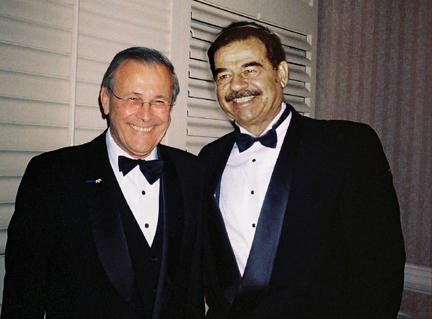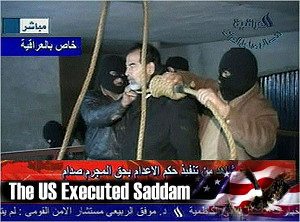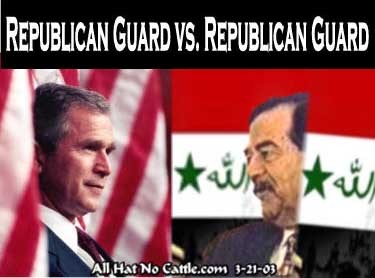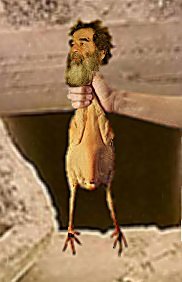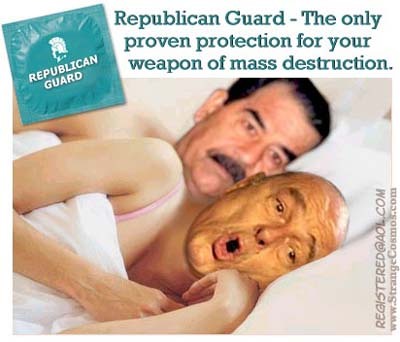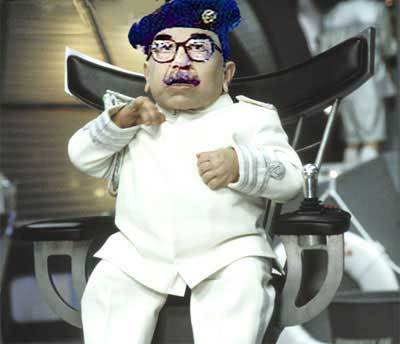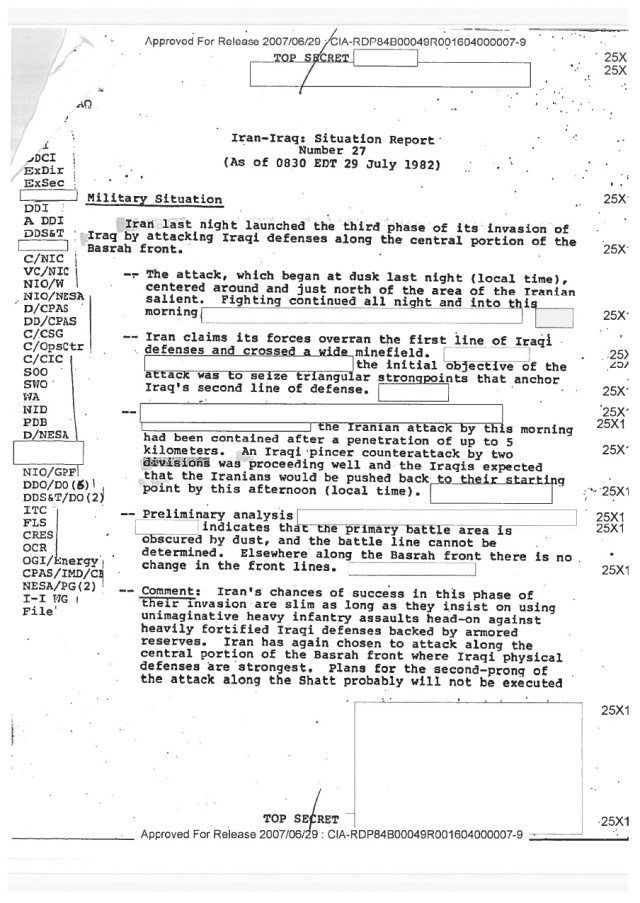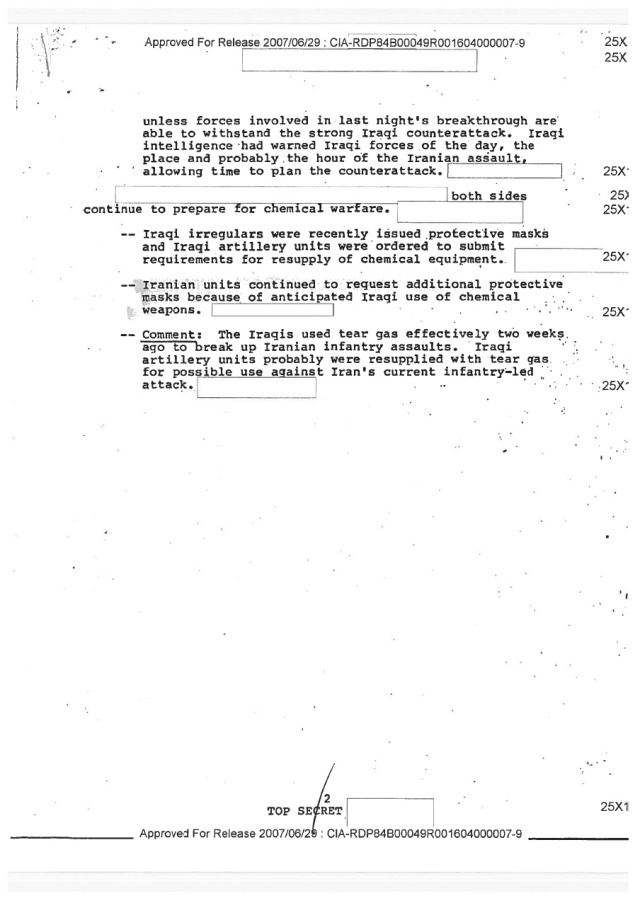EXCLUSIVE: SECRET CIA FILES PROVE THAT AMERICA HELPED SADDAM AS HE GASSED IRAN
Exclusive: CIA Files Prove America Helped Saddam as He Gassed Iran
HANE HARRIS AND MATTHEW M. AID | Tuesday, August 27, 2013, 22:17 Beijing
FROM 4TH MEDIA NEWS and FOREIGN POLICY EXCLUSIVE
Share on facebook Share on twitter Share on email Share on print Share on gmail Share on stumbleupon Share on favorites More Sharing Service
The U.S. knew Hussein was launching some of the worst chemical attacks in history — and still gave him a hand.
The U.S. government may be considering military action in response to chemical strikes near Damascus. But a generation ago, America’s military and intelligence communities knew about and did nothing to stop a series of nerve gas attacks far more devastating than anything Syria has seen, Foreign Policy has learned.
In 1988, during the waning days of Iraq’s war with Iran, the United States learned through satellite imagery that Iran was about to gain a major strategic advantage by exploiting a hole in Iraqi defenses. U.S. intelligence officials conveyed the location of the Iranian troops to Iraq, fully aware that Hussein’s military would attack with chemical weapons, including sarin, a lethal nerve agent.
The intelligence included imagery and maps about Iranian troop movements, as well as the locations of Iranian logistics facilities and details about Iranian air defenses. The Iraqis used mustard gas and sarin prior to four major offensives in early 1988 that relied on U.S. satellite imagery, maps, and other intelligence.
These attacks helped to tilt the war in Iraq’s favor and bring Iran to the negotiating table, and they ensured that the Reagan administration’s long-standing policy of securing an Iraqi victory would succeed. But they were also the last in a series of chemical strikes stretching back several years that the Reagan administration knew about and didn’t disclose.
THANKS FOR THE MEMORIES SADDAM
https://www.youtube.com/watch?v=L64WSPZ5mNk
U.S. officials have long denied acquiescing to Iraqi chemical attacks, insisting that Hussein’s government never announced he was going to use the weapons. But retired Air Force Col. Rick Francona, who was a military attaché in Baghdad during the 1988 strikes, paints a different picture.
“The Iraqis never told us that they intended to use nerve gas. They didn’t have to. We already knew,” he told Foreign Policy.
According to recently declassified CIA documents and interviews with former intelligence officials like Francona, the U.S. had firm evidence of Iraqi chemical attacks beginning in 1983.
At the time, Iran was publicly alleging that illegal chemical attacks were carried out on its forces, and was building a case to present to the United Nations. But it lacked the evidence implicating Iraq, much of which was contained in top secret reports and memoranda sent to the most senior intelligence officials in the U.S. government. The CIA declined to comment for this story.
In contrast to today’s wrenching debate over whether the United States should intervene to stop alleged chemical weapons attacks by the Syrian government, the United States applied a cold calculus three decades ago to Hussein’s widespread use of chemical weapons against his enemies and his own people.
The Reagan administration decided that it was better to let the attacks continue if they might turn the tide of the war. And even if they were discovered, the CIA wagered that international outrage and condemnation would be muted.
In the documents, the CIA said that Iran might not discover persuasive evidence of the weapons’ use — even though the agency possessed it. Also, the agency noted that the Soviet Union had previously used chemical agents in Afghanistan and suffered few repercussions.
It has been previously reported that the United States provided tactical intelligence to Iraq at the same time that officials suspected Hussein would use chemical weapons.
But the CIA documents, which sat almost entirely unnoticed in a trove of declassified material at the National Archives in College Park, Md., combined with exclusive interviews with former intelligence officials, reveal new details about the depth of the United States’ knowledge of how and when Iraq employed the deadly agents.
They show that senior U.S. officials were being regularly informed about the scale of the nerve gas attacks. They are tantamount to an official American admission of complicity in some of the most gruesome chemical weapons attacks ever launched.
Top CIA officials, including the Director of Central Intelligence William J. Casey, a close friend of President Ronald Reagan, were told about the location of Iraqi chemical weapons assembly plants; that Iraq was desperately trying to make enough mustard agent to keep up with frontline demand from its forces; that Iraq was about to buy equipment from Italy to help speed up production of chemical-packed artillery rounds and bombs; and that Iraq could also use nerve agents on Iranian troops and possibly civilians.
Officials were also warned that Iran might launch retaliatory attacks against U.S. interests in the Middle East, including terrorist strikes, if it believed the United States was complicit in Iraq’s chemical warfare campaign.
“As Iraqi attacks continue and intensify the chances increase that Iranian forces will acquire a shell containing mustard agent with Iraqi markings,” the CIA reported in a top secret document in November 1983. “Tehran would take such evidence to the U.N. and charge U.S. complicity in violating international law.”
At the time, the military attaché’s office was following Iraqi preparations for the offensive using satellite reconnaissance imagery, Francona told Foreign Policy. According to a former CIA official, the images showed Iraqi movements of chemical materials to artillery batteries opposite Iranian positions prior to each offensive.
Francona, an experienced Middle East hand and Arabic linguist who served in the National Security Agency and the Defense Intelligence Agency, said he first became aware of Iraq’s use of chemical weapons against Iran in 1984, while serving as air attaché in Amman, Jordan. The information he saw clearly showed that the Iraqis had used Tabun nerve agent (also known as “GA”) against Iranian forces in southern Iraq.
The declassified CIA documents show that Casey and other top officials were repeatedly informed about Iraq’s chemical attacks and its plans for launching more. “If the Iraqis produce or acquire large new supplies of mustard agent, they almost certainly would use it against Iranian troops and towns near the border,” the CIA said in a top secret document.
But it was the express policy of Reagan to ensure an Iraqi victory in the war, whatever the cost.
The CIA noted in one document that the use of nerve agent “could have a significant impact on Iran’s human wave tactics, forcing Iran to give up that strategy.”
Those tactics, which involved Iranian forces swarming against conventionally armed Iraqi positions, had proved decisive in some battles. In March 1984, the CIA reported that Iraq had “begun using nerve agents on the Al Basrah front and likely will be able to employ it in militarily significant quantities by late this fall.”
The use of chemical weapons in war is banned under the Geneva Protocol of 1925, which states that parties “will exert every effort to induce other States to accede to the” agreement. Iraq never ratified the protocol; the United States did in 1975. The Chemical Weapons Convention, which bans the production and use of such arms, wasn’t passed until 1997, years after the incidents in question.
The initial wave of Iraqi attacks, in 1983, used mustard agent. While generally not fatal, mustard causes severe blistering of the skin and mucus membranes, which can lead to potentially fatal infections, and can cause blindness and upper respiratory disease, while increasing the risk of cancer. The United States wasn’t yet providing battlefield intelligence to Iraq when mustard was used.
But it also did nothing to assist Iran in its attempts to bring proof of illegal Iraqi chemical attacks to light. Nor did the administration inform the United Nations. The CIA determined that Iran had the capability to bomb the weapons assembly facilities, if only it could find them. The CIA believed it knew the locations.
Hard evidence of the Iraqi chemical attacks came to light in 1984. But that did little to deter Hussein from using the lethal agents, including in strikes against his own people. For as much as the CIA knew about Hussein’s use of chemical weapons, officials resisted providing Iraq with intelligence throughout much of the war. The Defense Department had proposed an intelligence-sharing program with the Iraqis in 1986. But according to Francona, it was nixed because the CIA and the State Department viewed Saddam Hussein as “anathema” and his officials as “thugs.”
The situation changed in 1987. CIA reconnaissance satellites picked up clear indications that the Iranians were concentrating large numbers of troops and equipment east of the city of Basrah, according to Francona, who was then serving with the Defense Intelligence Agency.
What concerned DIA analysts the most was that the satellite imagery showed that the Iranians had discovered a gaping hole in the Iraqi lines southeast of Basrah. The seam had opened up at the junction between the Iraqi III Corps, deployed east of the city, and the Iraqi VII Corps, which was deployed to the southeast of the city in and around the hotly contested Fao Peninsula.
The satellites detected Iranian engineering and bridging units being secretly moved to deployment areas opposite the gap in the Iraqi lines, indicating that this was going to be where the main force of the annual Iranian spring offensive was going to fall, Francona said.
In late 1987, the DIA analysts in Francona’s shop in Washington wrote a Top Secret Codeword report partially entitled “At The Gates of Basrah,” warning that the Iranian 1988 spring offensive was going to be bigger than all previous spring offensives, and this offensive stood a very good chance of breaking through the Iraqi lines and capturing Basrah. The report warned that if Basrah fell, the Iraqi military would collapse and Iran would win the war.
President Reagan read the report and, according to Francona, wrote a note in the margin addressed to Secretary of Defense Frank C. Carlucci: “An Iranian victory is unacceptable.”
Subsequently, a decision was made at the top level of the U.S. government (almost certainly requiring the approval of the National Security Council and the CIA). The DIA was authorized to give the Iraqi intelligence services as much detailed information as was available about the deployments and movements of all Iranian combat units.
That included satellite imagery and perhaps some sanitized electronic intelligence. There was a particular focus on the area east of the city of Basrah where the DIA was convinced the next big Iranian offensive would come.
The agency also provided data on the locations of key Iranian logistics facilities, and the strength and capabilities of the Iranian air force and air defense system. Francona described much of the information as “targeting packages” suitable for use by the Iraqi air force to destroy these targets.
The sarin attacks then followed.
The nerve agent causes dizziness, respiratory distress, and muscle convulsions, and can lead to death. CIA analysts could not precisely determine the Iranian casualty figures because they lacked access to Iranian officials and documents.
But the agency gauged the number of dead as somewhere between “hundreds” and “thousands” in each of the four cases where chemical weapons were used prior to a military offensive. According to the CIA, two-thirds of all chemical weapons ever used by Iraq during its war with Iran were fired or dropped in the last 18 months of the war.
By 1988, U.S. intelligence was flowing freely to Hussein’s military. That March, Iraq launched a nerve gas attack on the Kurdish village of Halabja in northern Iraq.
A month later, the Iraqis used aerial bombs and artillery shells filled with sarin against Iranian troop concentrations on the Fao Peninsula southeast of Basrah, helping the Iraqi forces win a major victory and recapture the entire peninsula.
The success of the Fao Peninsula offensive also prevented the Iranians from launching their much-anticipated offensive to capture Basrah. According to Francona, Washington was very pleased with the result because the Iranians never got a chance to launch their offensive.
The level of insight into Iraq’s chemical weapons program stands in marked contrast to the flawed assessments, provided by the CIA and other intelligence agencies about Iraq’s program prior to the United States’ invasion in 2003. Back then, American intelligence had better access to the region and could send officials out to assess the damage.
Francona visited the Fao Peninsula shortly after it had been captured by the Iraqis. He found the battlefield littered with hundreds of used injectors once filled with atropine, the drug commonly used to treat sarin’s lethal effects. Francona scooped up a few of the injectors and brought them back to Baghdad — proof that the Iraqis had used sarin on the Fao Peninsula.
In the ensuing months, Francona reported, the Iraqis used sarin in massive quantities three more times in conjunction with massed artillery fire and smoke to disguise the use of nerve agents. Each offensive was hugely successful, in large part because of the increasingly sophisticated use of mass quantities of nerve agents.
The last of these attacks, called the Blessed Ramadan Offensive, was launched by the Iraqis in April 1988 and involved the largest use of sarin nerve agent employed by the Iraqis to date. For a quarter-century, no chemical attack came close to the scale of Saddam’s unconventional assaults. Until, perhaps, the strikes last week outside of Damascus.
BY SHANE HARRIS AND MATTHEW M. AID
Click to the next page to read the secret CIA files.
Tags: aid chemical CIA Iraq
When It Comes to Chemical Weapons, the U.S. Has a Lot of Explaining to Do
YAHOO NEWS: http://news.yahoo.com/essay-u-admit-backing-chemical-weapons-past-demands-181540685.html
By Shaya Tayefe Mohajer | Takepart.com 4 hours ago
Takepart.com PoliticsSaddam HusseinChemical weaponUnited StatesJohn KerryIranSyria
There is an unbearable familiarity for me in the videos that captured the spastic limbs and lifeless faces of the victims of Syria’s recent chemical attack. I’m reminded of disturbing images I peeked at through my fingers decades ago.
In the 1980s, I was just starting grade school—as small as some of the recent Syrian victims—when my Iranian-American family began going to protests in Southern California to shout our opposition to Saddam Hussein’s use of chemical weapons to kill off Iranians during the Iran-Iraq War.
Between the nightly news, photos on picket signs and interviews with survivors and victims’ families that aired on local Iranian-language newscasts, I’ll never forget what it looks like to die the violent, shuddering death that comes with chemical nerve agents, or to be disfigured by gas that fuses skin to bone and blinds.
Well, I won’t forget what it looked like in the moments before a parent would remember to say, “negah nakon!” (“don’t look!” in Farsi), or I’d get scared enough to cover my own eyes without being asked.
In those flashes of awful bloodless carnage, a pacifist was born in me.
When U.S. Secretary of State John Kerry lashed out against the use of “the world’s most heinous weapons” on Monday, I felt a deep agreement with his outrage.
Heinous is right, I thought.
The body of a victim who was killed by what activists say was a chemical weapons attack is seen in the Ain Tarma neighborhood of Damascus, August 23, 2013. (Photo: Reuters)
While Kerry accused the Syrian government of having used chemical weapons against its own people, UN inspectors dodged sniper bullets to begin their investigation near Damascus—an urgently necessary truth-finding mission that I wholeheartedly applaud.
But Kerry’s condemnation of Syrian leaders stung, too, when paired with this week’s revelation that under President Ronald Reagan, the U.S. supported the use of chemical weapons against Iran, resulting in tens of thousands of deaths during the Iran-Iraq War.
That’s right. Long before Hussein was a declared enemy of the United States, the Iraqi dictator was in bed with American military and intelligence forces in a bloody eight-year war against the Islamic Republic.
Unlike the current debacle in Syria, the perpetrator wasn’t in dispute when the Iraqi dictator used chemical nerve agents and mustard gas against Iranians. The current finger-pointing free-for-all in Syria—where the regime blames rebels and the rebels blame the regime—is shameful in itself.
Iran began alleging Iraqi chemical attacks in 1983, but lacked evidence to make its case at the United Nations prior to the declassification of top-secret reports this week, according to Foreign Policy.
A U.N.-led weapons-inspection team prepares leaking 122 mm rockets filled with the chemical nerve agent Sarin for destruction in the Iraqi desert in this undated photo. (Photo: Reuters)
Though the allegiance between Baghdad and Washington was openly known during the Iran-Iraq War, which stretched from 1980 to 1988, American officials always denied they knew the Iraqi despot planned to use chemical weapons in violation of the 1925 Geneva Protocol and other international agreements.
War is always deadly, but chemical weapons have long been reviled around the world under what the Red Cross calls “an ancient taboo against the use in war of plague and poison.”
Retired Air Force Col. Rick Francona, who was a military attaché in Baghdad during the war, told Foreign Policy in the exclusive report, “The Iraqis never told us that they intended to use nerve gas. They didn’t have to. We already knew.”
That means the U.S. was supplying Iraqi military with key movements of the Iranian military to ensure maximum impact of the devastating weapons, according to Foreign Policy.
“We already knew.”
Or, plainly, Iraq pressed the button, but the United States told them where to target the nerve gas.
I wonder if Francona’s sudden admission after years of silence is indicative of an aching conscience.
In 1988, Hussein was so pleased with the American intelligence that helped him pinpoint masses of Iranian soldiers, he invited Francona (then a Major under Col. Walter Patrick Lang) to tour captured Iranian trenches, where “evidence of Iraqi chemical weapons littered the ground in the form of atropine injectors used by desperate Iranians to stave off the horrific effects of nerve gas,” according to David Crist’s book, The Twilight War.
In one day alone, an estimated 1,500 rockets filled with nerve agent fell on Iranian front lines, killing tens of thousands of soldiers, according to Crist, who is a federal historian.
Like me, Francona must have seen some unforgettable sights that day.
And so, almost 30 years ago, while my relatives hid in basements in Tehran or fled to the countryside while Saddam rained SCUD missiles on urban, civilian targets, my life on this side of the world meant frequently attending protests under sunny skies.
My family gathered with hundreds of other Iranian-Americans and Iranian immigrants who had so much faith in American principles and democracy—and sorrow for what was happening to Iranians—that we stood on the lawn of the Federal Building in Los Angeles to ask for the U.S. to act. As hunger strikers sipped tea in tents, we chanted “No More War, We Want Peace” and solicited honks of support from passing cars on Wilshire Boulevard.
Even then I knew there was plenty of enmity to fuel America’s tacit consent for Iraqi war crimes.
Relations between Iran and the United States ended after revolutionaries stormed the American Embassy in Tehran in 1979, taking hostages for 444 days. Ayatollah Ruhollah Khomeini routinely called for “Death to America” in speeches. I grew up with the implicit understanding that for many Americans, that awful incident and Khomeini’s vitriol would be the first thing they thought of when I introduced myself as a daughter of Iranians.
Still, I am appalled the U.S. government helped Saddam, a violent madman by all accounts, in those notorious chemical attacks. It’s a shameful departure from the moral high ground this country rightly maintains in so many other facets of my life—my freedoms as a non-religious woman journalist, for starters.
The good news is it’s not too late for the U.S. to do the right thing.
Even if American officials made formal acknowledgment of their role in chemical warfare against Iran tomorrow, they will have done so at lightning speed compared to earlier offenders.
In 1935, fascist Italy launched a chemical weapon campaign against Ethiopia in violation of the Geneva Protocol, killing an estimated 15,000 Ethiopians in more than a dozen attacks, some of which lasted for days.
Ethiopian King Haile Selassie beseeched the League of Nations in 1936 to intervene to stop the Italian aircraft that spread “over vast areas of territory, a fine, death-dealing rain.”
It took until 1996 for the Italian government to admit using chemical weapons against Selassie’s people, according to the Stockholm International Peace Research Institute.
If history is any indication, the international community can’t afford to wait for Syria, or any nation or political body, to voluntarily take blame for the use of chemical weapons.
So, the question is: how can the United States call on a known despot to come clean about using chemical weapons this month when the greatest superpower in the history of time has swept its involvement in the use of such weapons under the rug for decades?
The United States should set an example for the world, showing that a superpower democracy behaves with transparency and humility, by acknowledging what happened during the Iran-Iraq War. Who knows, it could even serve as a crucial opening volley in the long overdue rapprochement between the U.S. and Iran (I won’t hold my breath, but I’ll hold on to hope that it will happen in my lifetime).
In the meanwhile, I hope it’s not too late to get to the bottom of what happened in Syria.
Today, I hope America chooses not to use military intervention in Syria, especially not before a speedy and thorough investigation on the use of chemical weapons is complete.
Today, international investigators must be allowed to settle the score of history on this fresh hell.
Today in Syria, the people deserve confirmation of this atrocity before any other conversation is had about reactions, military or otherwise.
Because no matter what happens, history was made when the chemical weapon was used, in the dead of night, against civilians near Damascus.
What happens next is the province of tomorrow.


